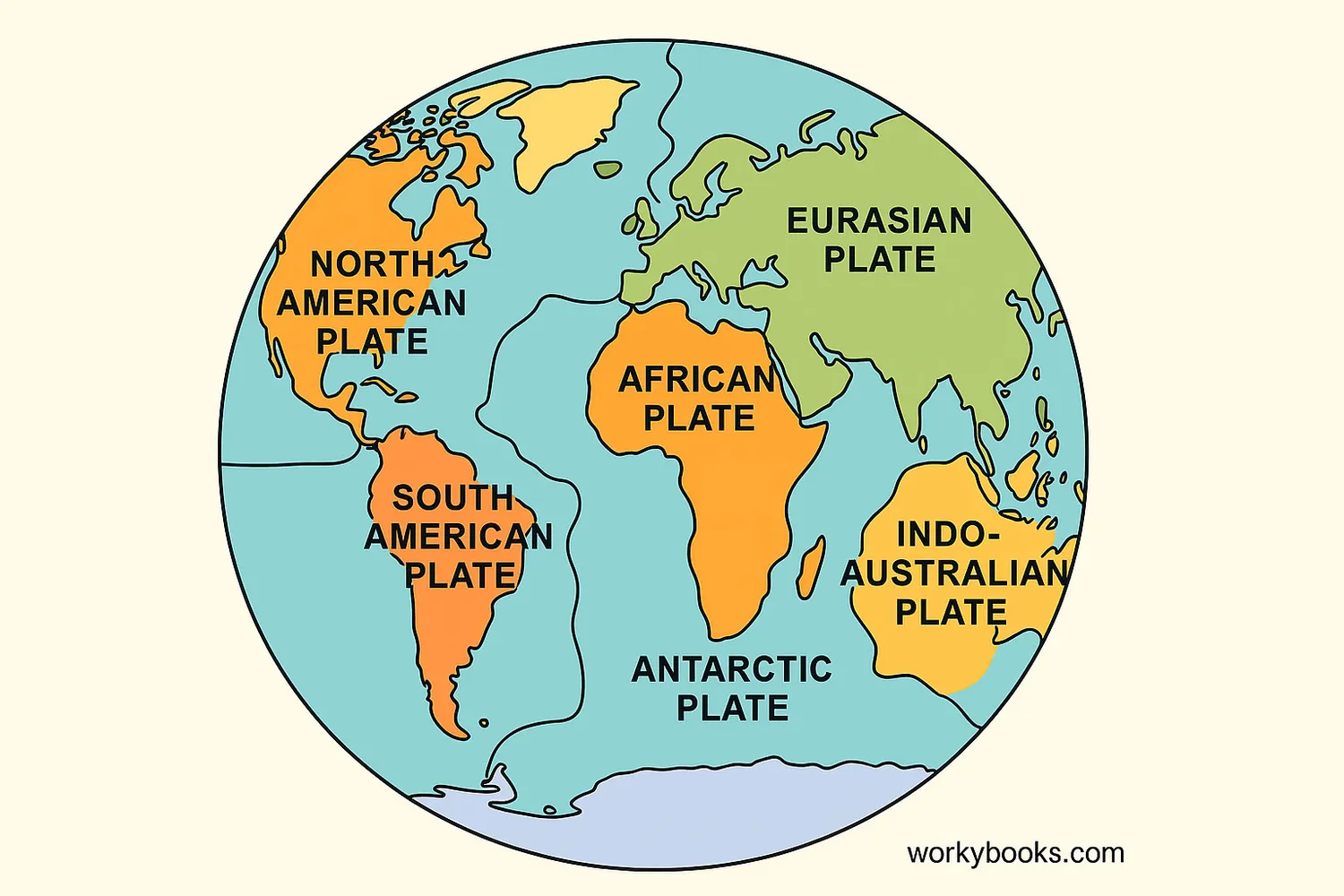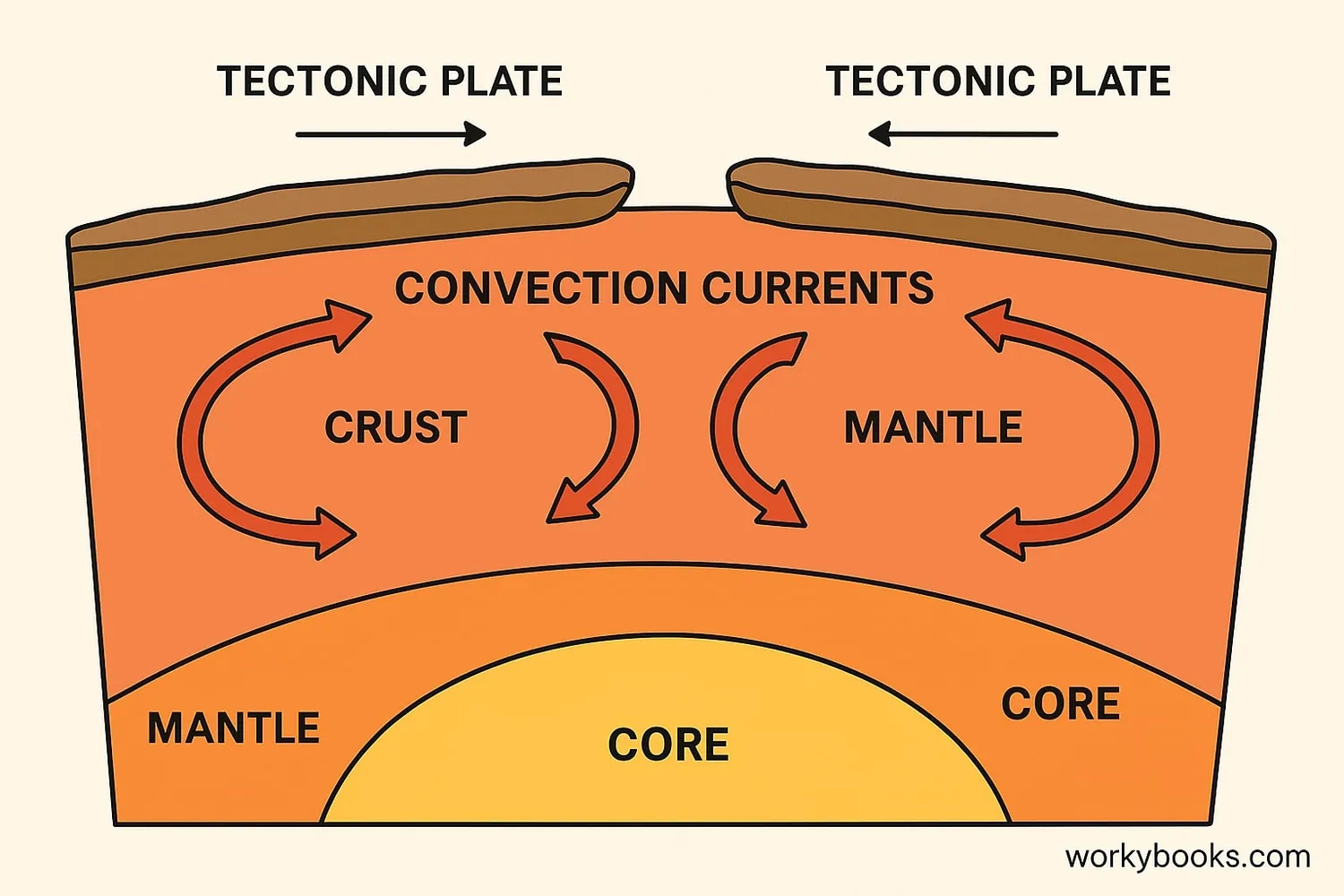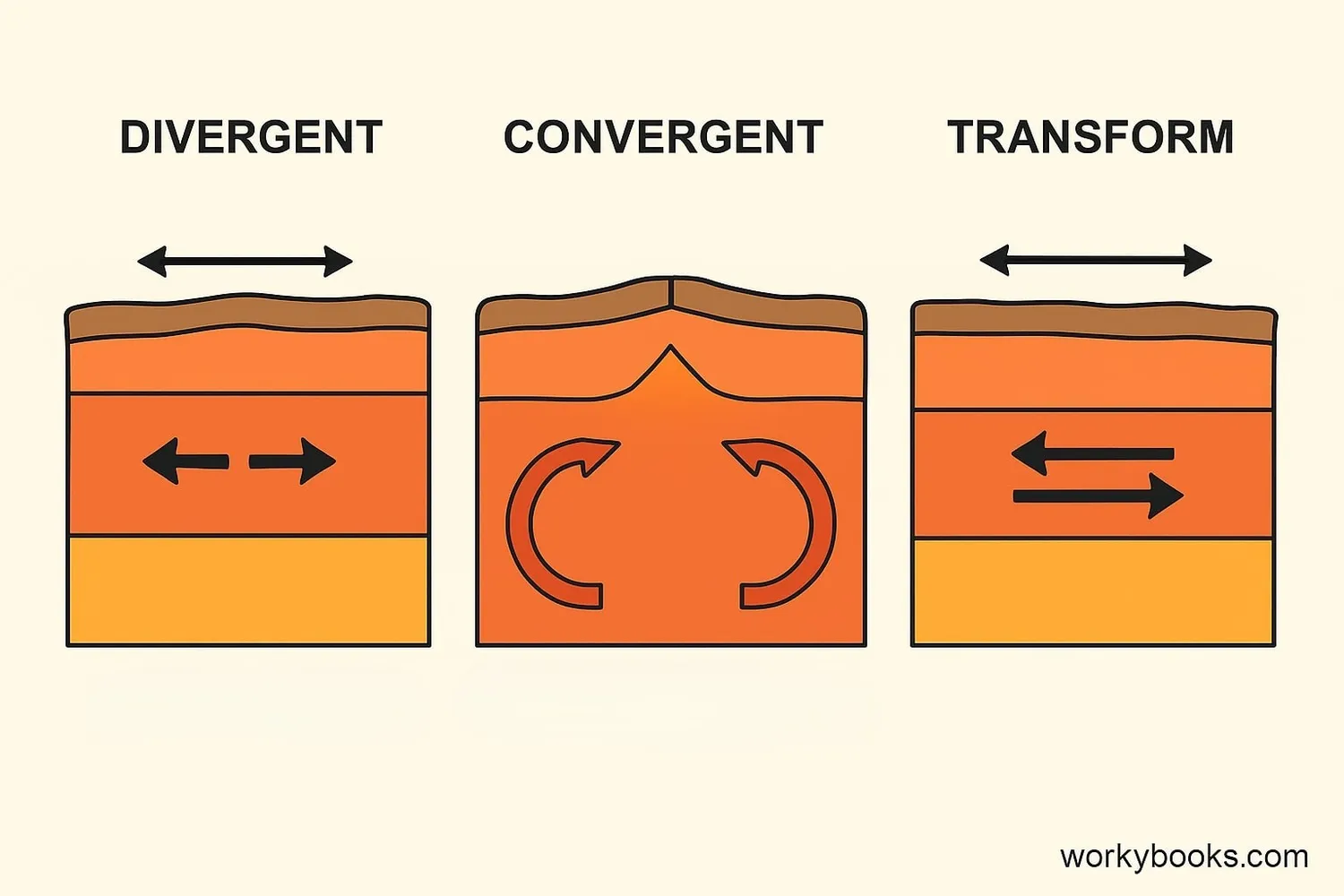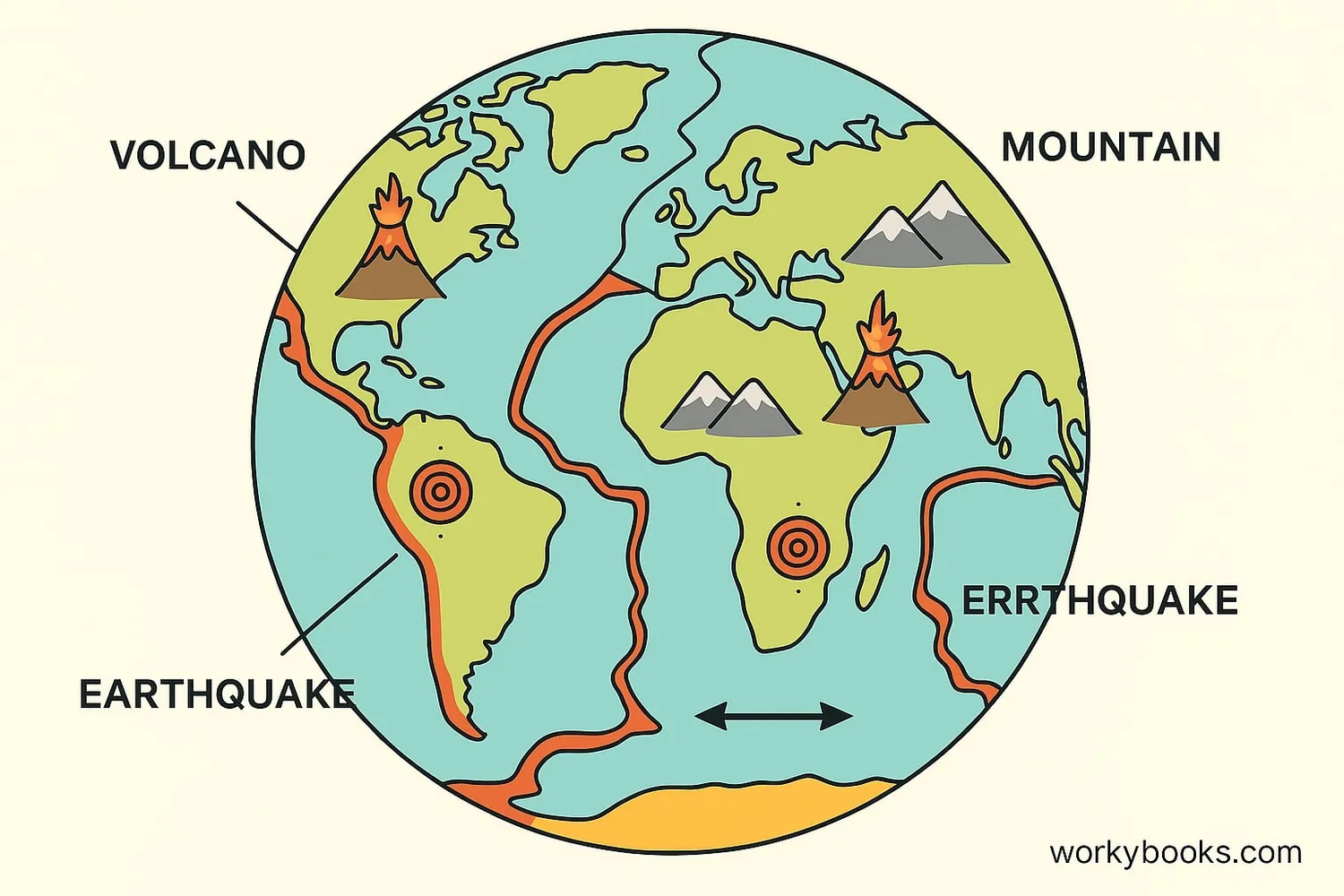Tectonic Plates - Definition, Examples, Quiz, FAQ, Trivia
Discover how Earth's surface is constantly changing and shaping our planet
What are Tectonic Plates?

Tectonic plates are like giant puzzle pieces that make up Earth's outer layer. The Earth's surface is divided into about 15-20 large plates that fit together like a jigsaw puzzle. These plates include:
• Oceanic plates - thinner plates under oceans
• Continental plates - thicker plates under continents
• Combination plates - plates that have both ocean and continent areas
These plates sit on top of the Earth's mantle and slowly move around. The movement is so slow that you can't feel it—about as fast as your fingernails grow! But over millions of years, these movements completely change Earth's surface.
Did You Know?
The theory of plate tectonics explains how continents move and why we have earthquakes, volcanoes, and mountains!
How Do Tectonic Plates Move?

Tectonic plates move because of heat deep inside the Earth! Here's how it works:
1. Earth's Layers: The Earth has three main layers:
• Crust - the thin outer layer we live on
• Mantle - thick, hot rock layer below the crust
• Core - super-hot center of the Earth
2. Convection Currents: Heat from the core makes the mantle rock slowly move in circular patterns called convection currents. It's like when you heat soup and see it rise and fall in the pot!
3. Plate Movement: These convection currents push and pull the tectonic plates that float on top. Where the plates meet, amazing things happen!
Mantle Facts
The mantle isn't liquid like lava—it's solid rock that flows very slowly over millions of years!
Types of Plate Boundaries

Where plates meet, we call it a plate boundary. There are three main types of boundaries, each creating different landforms and geological events:
Divergent Boundaries
Plates move apart, creating rift valleys and mid-ocean ridges where new crust forms
Convergent Boundaries
Plates push together, forming mountains, volcanoes, and deep ocean trenches
Transform Boundaries
Plates slide past each other, causing earthquakes along faults like the San Andreas
Special Convergent Boundaries
When an oceanic plate meets a continental plate, the denser oceanic plate sinks beneath in a process called subduction, creating volcanic mountain ranges like the Andes!
Effects of Plate Tectonics

Plate tectonics shape our planet in amazing ways! Here are some of the most important effects:
Volcanoes
Form at convergent boundaries and hotspots as magma reaches the surface
Earthquakes
Occur when plates suddenly slip past each other at boundaries
Mountain Building
When continents collide, they push up enormous mountain ranges
Ocean Basins
Mid-ocean ridges create new seafloor while trenches swallow old crust
The Ring of Fire: Around the Pacific Ocean, there's a horseshoe-shaped area where many plates meet. This region has about 75% of Earth's volcanoes and 90% of earthquakes! It includes places like Japan, Alaska, and California.
Continental Drift: Over millions of years, plate movements have shifted continents around. About 300 million years ago, all continents were joined in a supercontinent called Pangaea!
Plate Tectonics Quiz
Test your knowledge about Earth's moving plates! Answer these questions to see how much you've learned.
Frequently Asked Questions
Here are answers to common questions about plate tectonics:
Earth Science Trivia
Discover some amazing facts about our dynamic planet:
Fastest Moving Plate
The Pacific Plate moves faster than any other plate—about 7-10 cm per year. That's like moving the length of a school bus in a human lifetime!
Biggest Earthquake
The most powerful earthquake ever recorded was a magnitude 9.5 in Chile in 1960. It was caused by the Nazca Plate subducting beneath the South American Plate.
Growing Mountains
The Himalayas are still growing about 1 cm per year as India continues to push into Asia. Mount Everest gets a tiny bit taller each year!
New Ocean in the Making
In East Africa, a divergent boundary is splitting the continent apart. In about 10 million years, a new ocean will form where the African Rift Valley is today!


